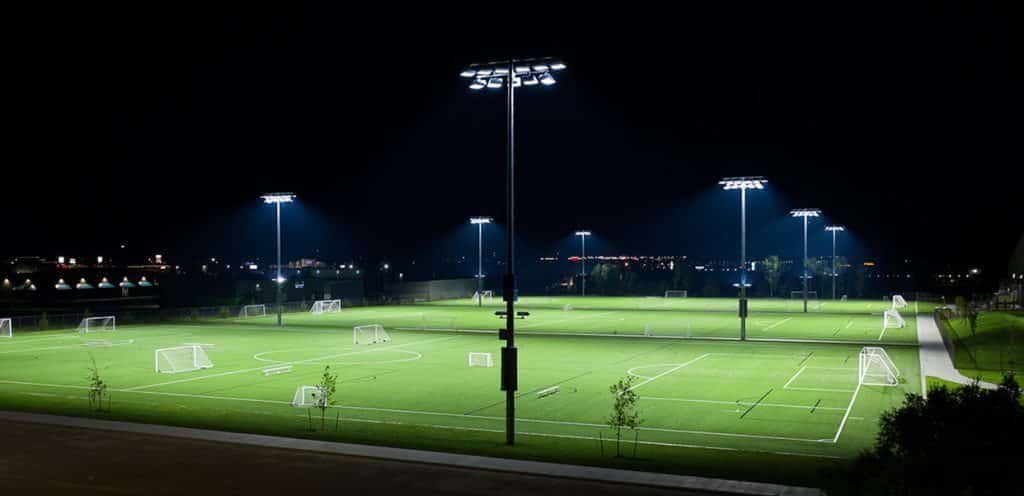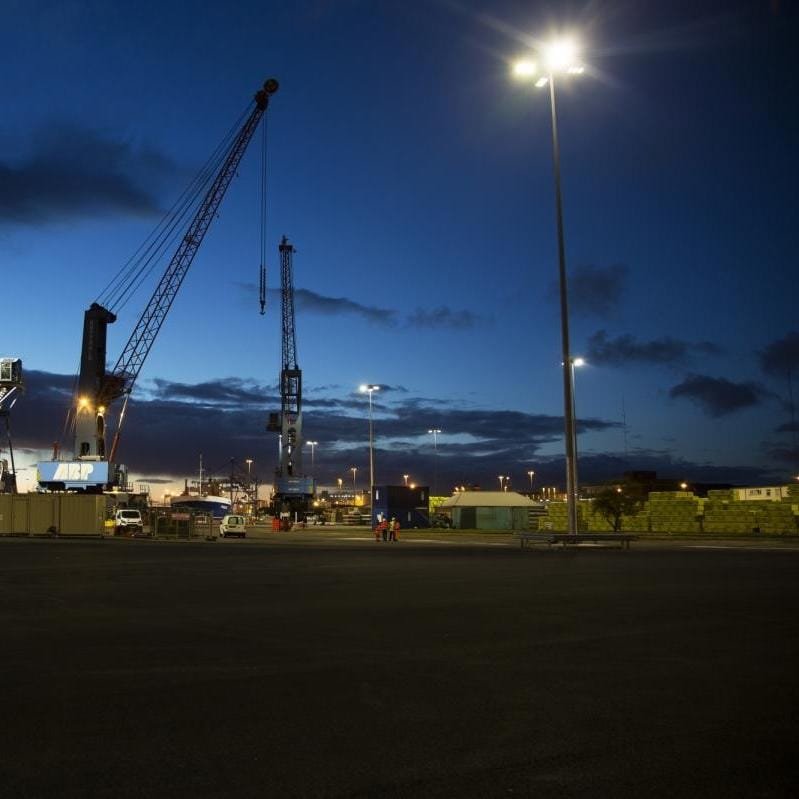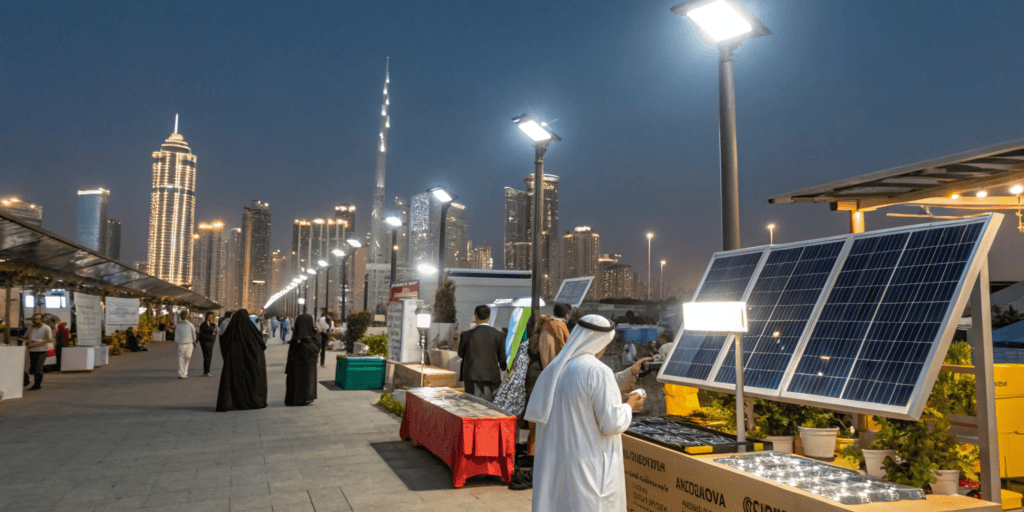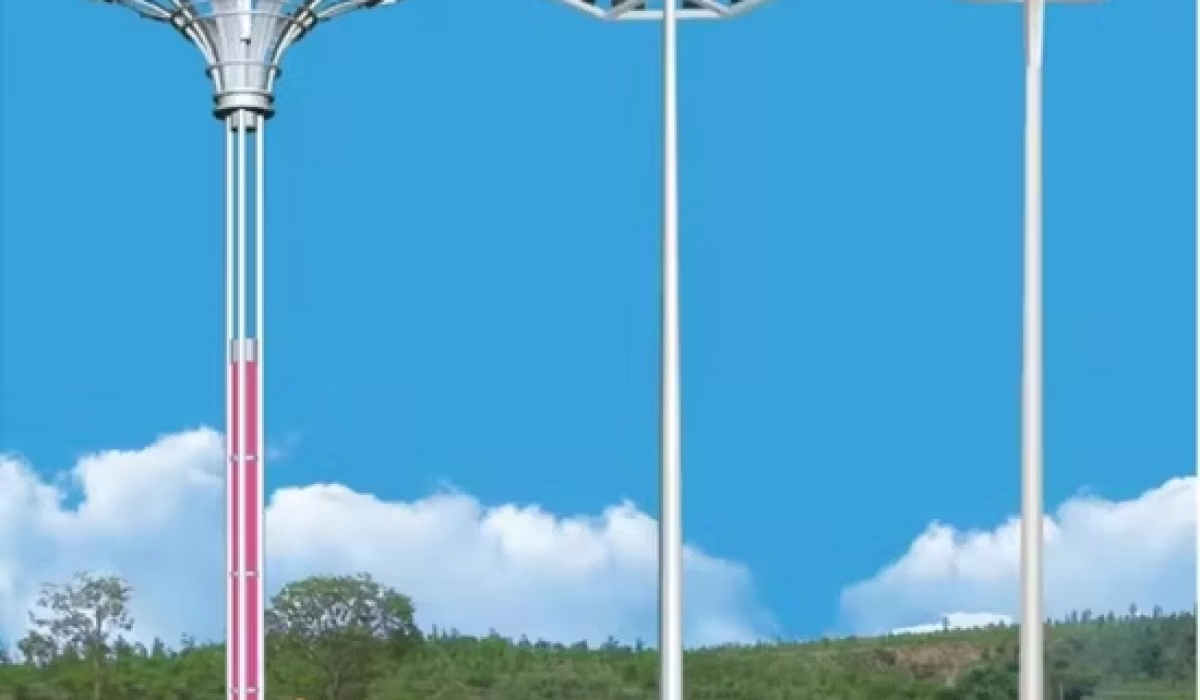I still remember the first time I saw a high mast lighting system being hoisted into place at a logistics yard in Lagos. The sheer height and the way it transformed the entire yard at night—it was almost like turning night into day.
High mast lighting can dramatically improve safety and efficiency in large industrial areas, but it’s not a one-size-fits-all solution.
Most people think brighter always means better, but the truth is more nuanced. Let’s break it down like we would in a real project meeting, with the messy realities included.
So, What Exactly Is High Mast Lighting?
Honestly, the first time someone asked me this, I thought it was just "big light poles." But after working on several installations, I realized it’s much more engineered.
High mast lighting refers to tall poles (usually 15–40 meters), each holding several high-output luminaires to cover large areas with fewer installations.
I’ve seen it used effectively in ports, big open industrial yards, and even massive outdoor storage lots. The advantage? You avoid the “Christmas tree” effect of having dozens of short poles cluttering the area.
Why Might It Be a Good Fit for Industrial Facilities?
If you’ve ever tried to navigate a forklift in a poorly lit yard, you know how nerve-wracking it can be.
The biggest benefits are improved safety, lower energy bills in the long term, and reduced maintenance headaches—if designed properly.

Enhanced Safety and Visibility
I’ve had clients tell me their workers felt safer at night almost overnight (pun intended) after installing high mast lighting. You get fewer blind spots and shadows, which directly translates into fewer accidents.
But it’s not magic. Poor aiming or the wrong fixture type can create glare or uneven patches, something I’ve personally had to troubleshoot.
Energy Efficiency (If Done Right)
We once swapped out a fleet of metal halide fixtures for LED high mast setups in a coastal container terminal. The electricity bill dropped by nearly 55%. But here’s the catch: some companies still use cheap, poorly designed LED modules that degrade fast.
When evaluating options, I always remind clients to check lumen maintenance rates, not just initial brightness claims.
Lower Maintenance Costs
Climbing up 30 meters to replace a fixture is no one's favorite job. High-quality LEDs can run for 50,000 hours or more, reducing these risky maintenance trips.
Of course, in reality, salt, wind, and dust can still shorten lifespans—so nothing is completely maintenance-free. I’ve seen even “maintenance-free” systems need unexpected repairs within 3–4 years due to corrosion in coastal regions.
| Feature | High Mast Lighting | Traditional Floodlights |
|---|---|---|
| Energy consumption | Lower (if LED) | Higher |
| Pole count | Fewer | Many |
| Maintenance frequency | Lower | Higher |
| Light spread | More uniform | Patchy |
What’s the Real Cost Story?

Here’s where many people stumble.
The upfront price is higher. But if you look beyond the invoice, the long-term picture often looks brighter (pun intended, again).
Initial Costs
You’re paying for robust poles, large concrete foundations, heavy-duty cranes, and certified electrical work. It’s not uncommon for initial budgets to balloon if ground conditions turn out to be worse than expected. I’ve seen projects where unexpected soil issues alone added 15% to installation costs.
Operational Costs
High mast lighting doesn’t need as many routine bulb changes, and energy savings add up. But you still need to budget for periodic inspections and occasional LED driver replacements. I’ve seen too many operators skip maintenance and end up with multiple failed fixtures all at once.
Long-Term ROI
Most clients see payback within 3–6 years, depending on local energy prices. The challenge is convincing finance teams to look at lifecycle cost rather than just the initial outlay.
How Does It Compare with Traditional Lighting?
I often get asked, "Why not just stick to more floodlights?"
Traditional floodlights seem cheaper but often cost more in the long run due to higher energy use, more poles, and frequent maintenance.
| Metric | High Mast Lighting | Floodlights |
|---|---|---|
| Initial cost | High | Low |
| Total poles | Fewer | Many |
| Maintenance | Less frequent | Frequent |
| Energy bill | Lower | Higher |
| Light quality | Excellent | Inconsistent |
What Should You Consider Before Pulling the Trigger?

No two facilities are exactly alike. A big outdoor warehouse yard in Togo isn't the same as a shipping terminal in China.
Size and Layout
If your space is vast and open, high mast lighting can drastically reduce the number of poles. In tight or segmented spaces, it can become overkill or even create glare problems.
Environmental Conditions
Near the coast? You’ll need extra corrosion resistance. High wind zones? Go for reinforced poles and stronger foundations. I learned this the hard way on a project in Ghana where we had to reinforce poles post-installation after unexpected coastal storms.
Future Growth
I always suggest thinking ahead. It’s much easier (and cheaper) to plan conduit paths and pole locations for future phases now, rather than rip up concrete later.
Conclusion
High mast lighting isn’t just about lighting up your yard—it’s about making a strategic investment in safety, operational savings, and future growth. Yes, it costs more upfront, and no, it’s not always the perfect fit.
But from my experience, when done right, it’s a game changer. Just make sure you look beyond glossy brochures and consider real-world factors—like weather, growth, and maintenance realities.


